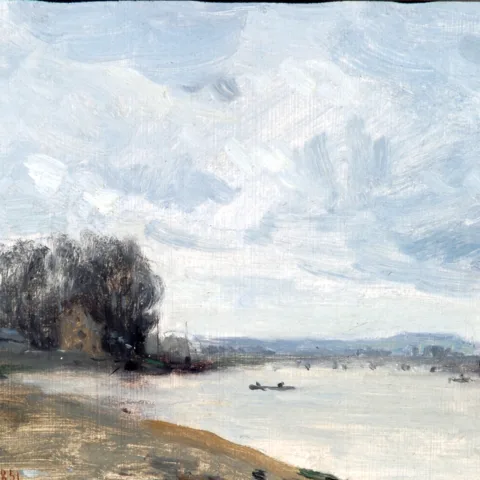The Bowes Museum Blog

The Agony in the Garden: when Christ encountered the Angel
When we think about the Agony in the Garden, we immediately recall the outstanding painting executed by the Italian Renaissance master Giovanni Bellini, which is in the collection of the National Gallery in London. The picture I present here to celebrate Easter, however, is in the collection of The Bowes Museum and was created by a Baroque artist, the Spanish painter José Antolínez (1639-1676). This artist was active in Madrid, becoming one of the leading painters in the second half of the 17th century, and depicted this image in 1665.

Agony in the Garden, José Antolínez (1639-1676)
The subject is taken from the New Testament (Mark 14. 32-43), where it is told that Christ, while praying near Jerusalem in the garden of Gethsemane, receives the visit of the angel who announces his imminent death. The dramatic moment when Christ accepts his destiny takes place after the Last Supper, on the eve of the Friday that we commemorate as Good Friday, just before Christ’s arrest.
According to the gospels, Christ was praying with his disciples, Peter, John and James, on the Mount of Olives, in the garden of the Gethsemane, which overlooked the city of Jerusalem. Despite their good will, the apostles could not stay awake and fall asleep while Christ, overwhelmed by anguish and sadness, asked his Father to be spared saying ‘My Father, if it is possible, let this cup pass me by. Nevertheless, let it be as you, not I, would have it.’ Then, he added: ‘If this cup cannot pass by, but I must drink it, your will be done!’ (Matthew 26:42). During his agony ‘his sweat was as it were great drops of blood falling down upon the ground.’(Luke 22:44). In that moment, an angel appeared from heaven to strengthen him and at the same offering him the chalice and the cross, symbols of the Father’s will and the forthcoming death of Christ.
The scene depicted here focuses all of our attention on Christ, whose figure seems encircled in an oval by the angel’s right wing and the trunk of a tree. The brilliance of the red and blue of Christ’s tunic makes him to stand out from the sandy background. At the same time, the fluctuating angel appears ethereal and sublime in his yellow dress, and the white drapery looks as if it is part of the voluminous clouds that populate the dark sky.
By Bernadette Petti, Assistant Curator of Fine Art







